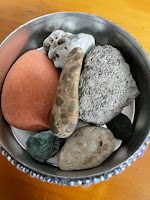I was not a hip kid. My parents were immigrants and watched every penny. It meant there was no money for fashion or new music … 2 necessary ingredients for being in style. While I learned to sew and gradually resolved my fashion issues, I fed my need for music with a treasure-trove of old music down in the basement where I immersed myself with Dad’s old 78s.
.jpg) |
| Rosita Serrano, Public Doman |
The British had Vera Lynn's We'll Meet Again, the Americans had Marlene Dietrich's Lili Marleen and the Russians? Who did the Soviet soldiers listen to for romance? Perhaps it was the Blue Scarf by Klavdiya Shulzhenko, which I first heard of when reading Maria Stepanova’s book, In Memory of Memory. The lyrics, originally released in 1940 were changed slightly by Mikhail Maximov after the Nazi invasion of June, 1941 and became, “The soldier fires his machine-gun for the blue scarf that rested once on the shoulders of his beloved.” Machine-guns for love.
 |
| Cover for Klavdiya Shulzhenko's Blue Scarf Album |
When I traveled through the Zhytomyr Oblast of Ukraine back in 2004, it coincided with the Victory Day holiday … the victory over the fascists. In poverty-stricken Ukrainian villages, music blared through tinny speakers as old men drank home-brew and remembered old battles. I was struck by the hold that the music of war still had on the countryside. Even in the bigger centres, military music was blasted by military parades and in public squares.
Music stimulates emotion and like magic, it transports people to other places and times. It unites people with shared memories and with aspirations for the future. It’s powerful, potentially dangerous and universal in its appeal.
I wonder what music plays throughout Ukraine during these terrible months of invasion? Perhaps I’ll find out as I begin a new volunteer session with a recent Ukrainian immigrant.















